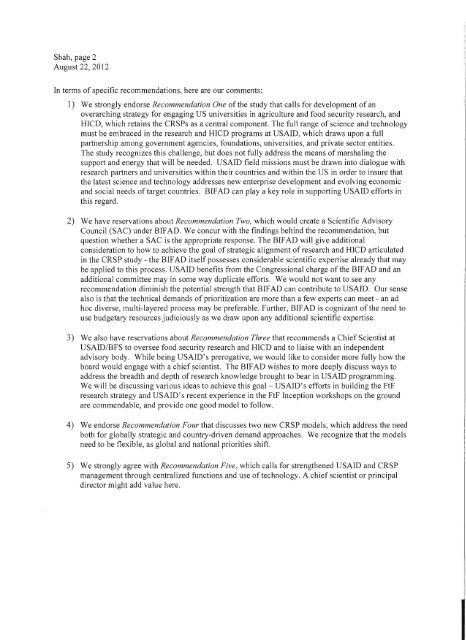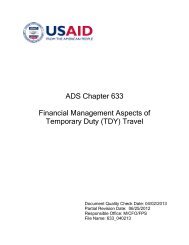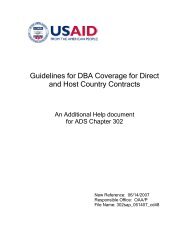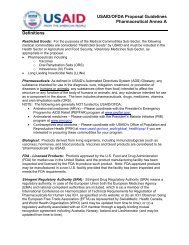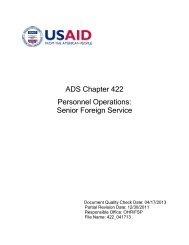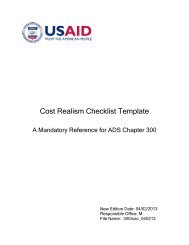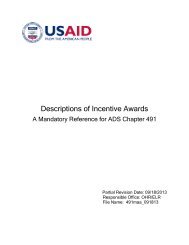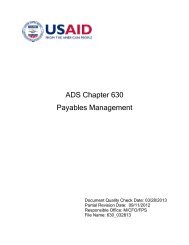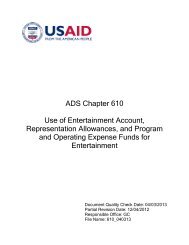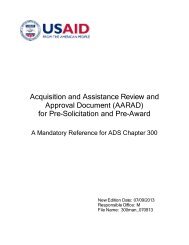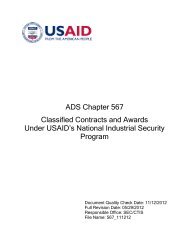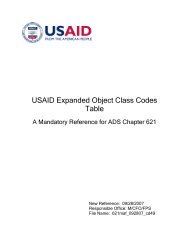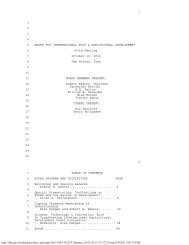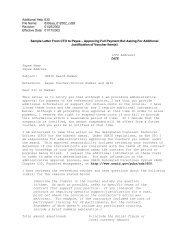CRSP Review Team Letter of Transmittal - usaid
CRSP Review Team Letter of Transmittal - usaid
CRSP Review Team Letter of Transmittal - usaid
You also want an ePaper? Increase the reach of your titles
YUMPU automatically turns print PDFs into web optimized ePapers that Google loves.
Shah, page 2August 22, 2012In terms <strong>of</strong> specific recommendations, here are our comments:1) We strongly endorse Recommendation One <strong>of</strong> the study that calls for development <strong>of</strong> anoverarching strategy for engaging US universities in agriculture and food security research, andHICD, which retains the <strong>CRSP</strong>s as a central component. The full range <strong>of</strong> science and technologymust be embraced in the research and HICD programs at USAID, which draws upon a fullpartnership among government agencies, foundations, universities, and private sector entities.The study recognizes this challenge, but does not fully address the means <strong>of</strong> marshaling thesupport and energy that will be needed. USAID field missions must be drawn into dialogue withresearch partners and universities within their countries and within the US in order to insure thatthe latest science and technology addresses new enterprise development and evolving economicand social needs <strong>of</strong>target countries. BIFAD can playa key role in supporting USAID efforts inthis regard.2) We have reservations about Recommendation Two, which would create a Scientific AdvisoryCouncil (SAC) under BIFAD. We concur with the findings behind the recommendation, butquestion whether a SAC is the appropriate response. The BIF AD will give additionalconsideration to how to achieve the goal <strong>of</strong> strategic alignment <strong>of</strong> research and HICD articulatedin the <strong>CRSP</strong> study - the BIF AD itself possesses considerable scientific expertise already that maybe applied to this process. USAID benefits from the Congressional charge <strong>of</strong> the BIFAD and anadditional committee may in some way duplicate efforts. We would not want to see anyrecommendation diminish the potential strength that BIF AD can contribute to USAID. Our sensealso is that the technical demands <strong>of</strong> prioritization are more than a few experts can meet - an adhoc diverse, multi-layered process may be preferable. Further, BIFAD is cognizant <strong>of</strong> the need touse budgetary resources judiciously as we draw upon any additional scientific expertise.3) We also have reservations about Recommendation Three that recommends a Chief Scientist atUSAID/BFS to oversee food security research and HICD and to liaise with an independentadvisory body. While being USAID's prerogative, we would like to consider more fully how theboard would engage with a chief scientist. The BIF AD wishes to more deeply discuss ways toaddress the breadth and depth <strong>of</strong> research knowledge brought to bear in USAID programming.We will be discussing various ideas to achieve this goal- USAID's efforts in building the FtFresearch strategy and USAID's recent experience in the FtF Inception workshops on the groundare commendable, and provide one good model to follow.4) We endorse Recommendation Four that discusses two new <strong>CRSP</strong> models, which address the needboth for globally strategic and country-driven demand approaches. We recognize that the modelsneed to be flexible, as global and national priorities shift.5) We strongly agree with Recommendation Five, which calls for strengthened USAID and <strong>CRSP</strong>management through centralized functions and use <strong>of</strong>technology. A chief scientist or principaldirector might add value here.


